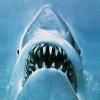Faenor, have you thought that maybe what we referenced was enough. 75% was good enough to rule out the whole order Carnivora with the impressions we have in the bones. You tell me what difference other than size do you see in those 2 examples I provided above. That is one of the identifying characteristics of the whole order.
But just for you here is one from my part of our research. I don't think it was included in the main paper:
The bite of a carnivore can usually be distinguished from the bite of a human by comparing the sizes of the incisor and cuspid teeth. Cuspids in non-humans are called canine teeth. Carnivores, such as dogs, bears, and mountain lions have small incisors and large canines. Therefore their bites usually consist of two deep punctures with six small indentions in between, which correspond to the three incisors per quadrant of most carnivores. In humans, however, the cuspids are relatively small and the incisors are relatively large, especially the first incisors. So, a human bite will usually consist of two broad tears or punctures in the center of the mark, corresponding to the two first incisors; with two smaller indentations on each side corresponding to the second incisors and the cuspids. (Skelton. 2011)
And I'm sorry. I know that isn't what you want. But it does go to what we see in the bones.
Are you from Missouri by any chance?


